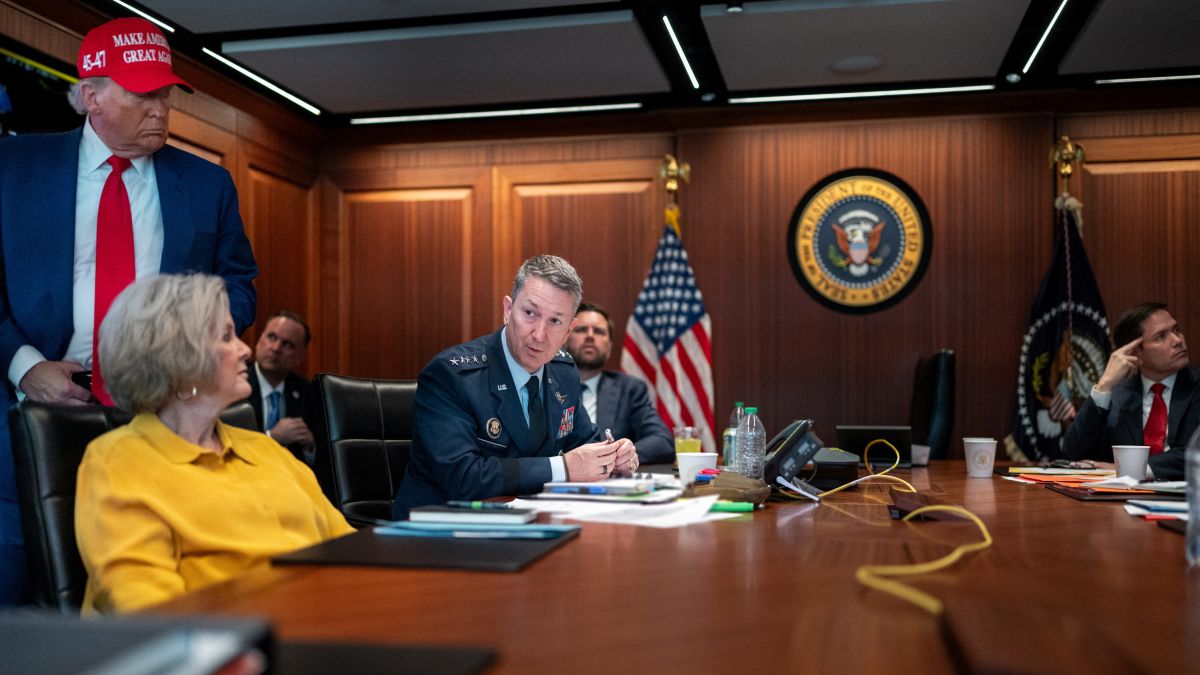It’s Day 10 of the Israel-Iran conflict, and Donald Trump has stepped in. The US struck key Iranian nuclear facilities early Sunday (June 22): Fordow, Natanz and Isfahan. The sites were “totally obliterated”, the US president said and warned that the US could continue the strikes if Iran did not make peace.
While Tehran has been downplaying Sunday’s attacks and threatening “everlasting consequences,” the Islamic Republic has already seen large-scale devastation in the war. Israel has hit military and strategic targets, nuclear sites and civilian areas and eliminated top Iranian commanders and nuclear scientists. Iran too has bombed Tel Aviv, Jerusalem and other big cities, and launched missiles at a hospital in southern Israel and the Tel Aviv Stock Exchange; Tehran even claimed to have hit the Mossad headquarters.
On Thursday (June 19), Donald Trump said that he would decide in the next two weeks if the US would join Israel in its war against Iran. However, it took him two days to take the big call and enter the conflict. The consequences of that will be far-reaching.
A prolonged conflict will have a fallout that will hurt the world. Oil prices are increasing and the global economy is likely to suffer if the war is not contained. Diplomacy is the only way forward.
In our weekly roundup, we look at how the crisis in West Asia is unfolding.
1. Day 10 of the Israel-Iran conflict took a shocking turn. The US struck Fordow and other nuclear sites in Iran. Donald Trump has warned that Iran must make peace and “future attacks will be greater”. What targets did America hit? And how did they destroy Iranian facilities , including the most fortified Fordow? This story explains.
2. Israel and Iran have been trading attacks, hitting nuclear sites, military targets and civilian areas. Israel claims to have taken complete control of Iran’s skies. Tehran has been launching hundreds of missiles at Israel, with explosions reported over the last few days in Tel Aviv, Jerusalem, and Haifa, among others.
Impact Shorts
More ShortsThere is no sign of de-escalation, and diplomatic efforts have not yielded any significant results yet. So, if the war continues, who has the upper hand? Iran or Israel?
3. Israel’s big mission was to dismantle Iran’s controversial nuclear programme. At the centre of it was the Fordow uranium enrichment site. “The entire operation… really has to be completed with the elimination of Fordow,” Israeli Ambassador to the US Yechiel Leiter told Fox News recently.
After the US strikes, Trump claims, “Fordow is gone”.But what is this secret facility hidden in the mountains? And why is it so crucial to Iran? But what is this secret facility hidden in the mountains? And why is it so crucial to Iran?
4. While Fordow might be Israel’s big target in the conflict against Iran, destroying it would be near-impossible for Israel alone. This is why the Jewish nation was hoping Donald Trump would join its war. The US used bunker-buster bombs to destroy Fordow. Read about them in this explainer.
5. Iran calls it the “Israeli striker”. The Fattah-1 is the Islamic Republic’s first hypersonic missile. The Islamic Revolutionary Guard Corps (IRGC) launched it earlier in the week at Israel. Unveiled in 2023, the Fattah-1 boasts high speed, precision, and the ability to change its path during flight. Here’s everything you need to know about this missile.
6. One of Israel’s early targets during the ongoing conflict was the South Pars gas field. Jointly owned by Iran and Qatar, it is the largest gas field in the world. Operations there shut down partially after a fire caused by an Israeli air strike. Here’s how such attacks can lead to disruptions and affect the world.
7. Iran has threatened to close the Strait of Hormuz. It’s called the oil artery of the world. Roughly 20 million barrels per day of oil and oil product shipments pass through this strategic waterway daily. So what happens if Tehran acts on its threat? Has the Strait ever been shut before? This report takes a deep dive.
8. Like all conflicts, this one has also left the world divided. Israel has the support of the US and the UK. However, China seems to have picked the side of the Islamic Republic. Recently, three cargo planes from China flew into Iran. What were they carrying? Possibly heavy-duty military equipment that Tehran could use in the war.
9. Iran’s big strength has been the Axis of Resistance – its network of allies. Hezbollah is most prominent among them. However, weakened by Israel over the last year, the Lebanon-based outfit is conspicuous by its absence in the ongoing conflict. Here’s why Hezbollah has stayed out … for now.
10. What does pizza have to do with the Israel-Iran conflict? There’s a viral theory that the spike in pizza orders at the Pentagon means a crisis is in the making. It’s called the Pentagon Pizza Index . There was reportedly a surge in deliveries from three outlets in Arlington County, Virginia, where the US military headquarters is based—an interesting way to predict a crisis.
That’s all from us this week. These are our 10 recommendations on the Israel-Iran conflict. If you want to keep up with the latest, bookmark this page .
)